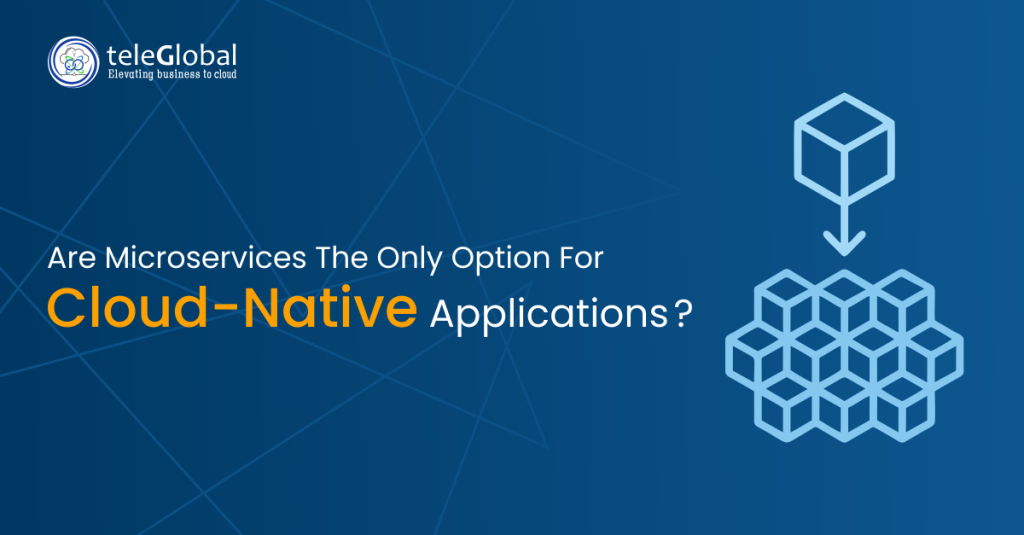
| Author: Kamlesh Kumar | Published: 26-Sep-2022 |
Cloud-native applications have become a mainstay for organizations thanks to their ability to provide data-driven responses to a variety of queries concerning business operations. In addition to consistency and superior functionality, cloud-native applications allow organizations to focus on ways to enhance the customer experience.
As cloud-native applications continue to evolve, there is little doubt that organizations will seek to leverage them more and more to gain a competitive edge. Microservices have played a key role in this growing acceptance, and now are certainly the preferred architecture for cloud-native applications.
To utilize them in building their cloud-native applications, it is very important for organizations to understand how microservices work and to learn new paradigms and how they can be leveraged to rebuild existing applications as evolved, cloud-native ones.
However, does this mean that microservices are the only—or even the best— way to create cloud-native applications? So when should one use microservices?
| Advantages | Challenges |
|---|---|
| Enhanced security. Since services are mostly independent components, the surface for attacks is small, making them safer. | Not ideal for legacy applications as re-architecting codebases is costly and complex |
| Simple to understand the independent components, and how they work together. | Deploying distributed service clusters can be tedious and complex. |
| High scalability is possible due to services segregation. | Unlike monolithic applications, microservices testing is time intensive. |
| Improved testing, given the independency and smaller size of services. | Paucity of developer tools capable of supporting distributed deployment. |
| Enables CI/CD deployment as complex applications, updates, and bug fixes can be released faster. | Special code needs to be written for communication effectiveness between modules. |
Best Practices of Using Microservices for Cloud-Native Applications
Microservices have proved to be a boon in simplifying the complex, distributed applications critical to an organization’s existence. For one, they make it easier to build applications as a stack of services capable of being independently developed, scaled, and tested. Despite all their advantages, there are some considerations that organizations should be aware of.
1.Avoiding the one size fits all approach
Choosing to adopt microservices to build cloud-native applications should be based on the organization’s requirements. It is not ideal to choose to use them for all of their applications or none of their applications. This is not a good strategy at all. Far better to evolve and extend current monolithic applications, adding use cases of microservices as they go along, will enable them to avoid starting from scratch.
2.Seeking compatibility to avoid bottlenecks
There is no doubt that microservices architectures tend to introduce greater complexity, compared to traditional monolithic applications.
In use cases where microservices deliver robust outcomes, for instance, diverse technology stacks, resilient boundaries for subsystems, and independent deployment, new bottlenecks—some associated with distributed deployment, including disparate models of data—may appear. Such bottlenecks may also arise from the need to build strong communication between the microservices or achieve consistency.
Thus the complex nature of microservices architectures makes them ideal for only applications that are compatible with them. In use cases involving complex applications or large ones with multiple subsystems, it makes more sense to invest in architectures with greater complexity. This is especially true if organizations are looking for efficient maintenance and long-term agility for their applications on the cloud.
3.Avoiding microservices for simpler apps
For low complexity use cases, it is recommended that organizations continue operating with monolithic applications or adopt even simpler approaches. Evolving from monolithic, organizations should begin by breaking down applications and moving toward microservices carefully by following accepted best practices.
Benefits and Challenges
Every new technology brings both benefits and challenges and microservices are no different. Here’s a quick look at the various benefits and challenges of using microservices for cloud-native applications. In this instance, however, it can be rightly argued that the benefits of microservices architectures outweigh their challenges and that solutions such as cloud-native APIs can mitigate most complexities arising from most use cases.
Both small and large organizations are increasingly adopting microservices. According to a social media analytics study by Gartner, microservices architecture mentions increased by over 40% between 2019 and 2020.
As an independent Cloud Services Provider and partner to AWS, Azure, and GCP, Teleglobal is more than familiar with building and optimizing architectures for cloud-native applications. Earlier this year, we leveraged this capability to build a web analytics tool for a next-generation shopping player in the MEA region. We created a state-of-the-art platform using microservices and DevSecOps tools to make it highly resilient and scalable. The platform helped the business optimize its overall costs by 55% as well as improve performance by a staggering 450%!
Final Words
While the benefits of a microservices architecture are not in doubt, they do compel organizations to build capabilities for managing their development cycle with greater complexity.
As technology endpoints increase so does the need to adjust security processes. Using microservices architectures allows organizations to gain a competitive edge through cloud-native applications, with cloud-native APIs to reduce complexities related to microservices, and allow simplification and realignment of the digital ecosystem.
 close
close

Hi there! At TeleGlobal, we turn your cloud vision into AI-accelerated reality. What challenge can we help you solve?
Powered by ![]() teleBot
teleBot